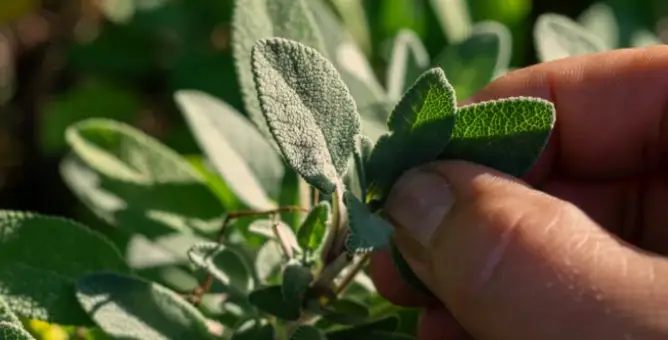Sage, with its distinct aroma and versatile uses, has been a beloved herb for centuries.
Whether you’re a passionate gardener or an herb enthusiast, understanding the growth rate of sage is essential.
In this blog post, we will delve into the fascinating world of sage and explore the factors that influence its growth.
What is the Sage Plant?
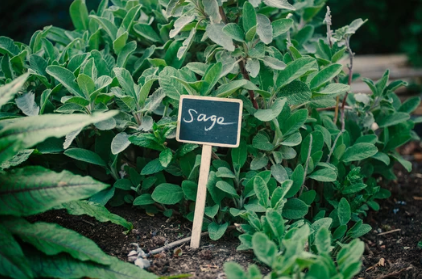
Sage, scientifically known as Salvia officinalis, is a perennial herb that belongs to the mint family, Lamiaceae.
This herb is native to the Mediterranean region, where it has been used for culinary, medicinal, and ceremonial purposes for thousands of years.
With its woody stems, velvety leaves, and beautiful flowers, sage is a captivating addition to any garden or kitchen.
How Fast Does Sage Grow?
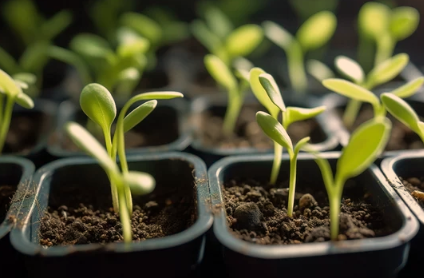
How Fast Does Sage Grow
Sage’s growth rate is relatively slow compared to some other herbs. It typically takes around 2 to 3 years for sage plants to reach their full size and maturity.
However, sage’s resilience and longevity make it a worthwhile herb to cultivate, offering abundant harvests and aromatic foliage that can enhance culinary dishes and herbal preparations.
During the first year of growth, sage plants focus on establishing a strong root system and developing a healthy framework of stems and leaves.
In this initial stage, sage tends to have a slower growth rate, with plants typically reaching a height of 6 to 8 inches (15 to 20 cm).
In the second year, sage plants usually experience more rapid growth as they continue to develop a bushier form.
The height of sage plants can reach around 1 to 2 feet (30 to 60 cm) by the end of the second year. However, it’s important to note that individual growth rates may vary.
By the third year, sage plants are considered mature and will continue to grow at a moderate pace, expanding in width and density. At this stage, sage can reach a height of 2 to 3 feet (60 to 90 cm) or more, depending on the specific cultivar and growing conditions.
Factors Influencing Sage Growth
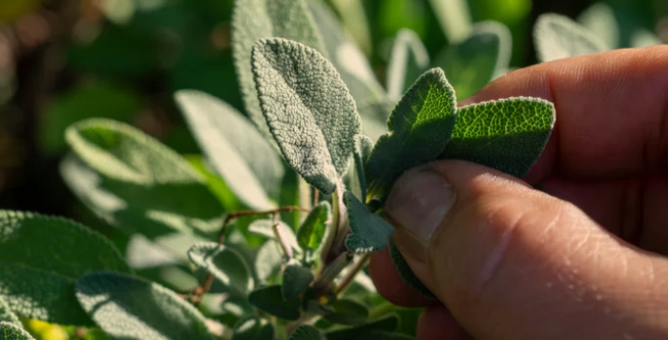
To understand how fast sage grows, we must consider the environmental factors that influence its growth. Temperature, sunlight, and soil conditions play crucial roles in determining the growth rate of sage.
Temperature
Sage thrives in moderate to warm climates. Ideally, it prefers temperatures between 60°F (15°C) and 70°F (21°C) for optimal growth. Lower temperatures can slow down the growth rate, while extreme heat may cause stress to the plant.
Sunlight
Sage is a sun-loving herb that requires at least 6 hours of direct sunlight per day.
Ample sunlight ensures vigorous growth, photosynthesis, and the development of essential oils that give sage its distinctive flavor and aroma.
Soil Conditions
Sage prefers well-drained soil with a slightly alkaline pH level ranging from 6.0 to 7.0. Good drainage is crucial to prevent waterlogged roots and potential root rot.
Also, enriching the soil with organic matter before planting can provide essential nutrients for sage’s growth.
Sage Plant Germination and Early Growth
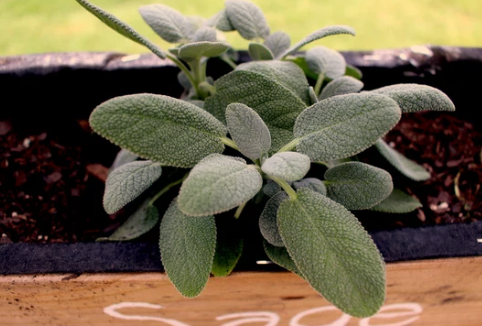
Stage Sage seeds can be started indoors or directly sown in the garden, depending on the climate and personal preference.
To enhance germination, it is recommended to stratify the seeds by chilling them in the refrigerator for a few weeks before planting.
Under optimal conditions, sage seeds typically germinate within 10 to 21 days.
During this stage, the seeds send out roots and develop their first set of leaves, known as cotyledons. Proper moisture and consistent watering are crucial to support healthy germination and early growth.
Sage Plant Vegetative Growth and Expansion
After the germination stage, sage plants enter a phase of vegetative growth, characterized by the development of stems, leaves, and an expanding root system.
With the right conditions, sage can grow rapidly during this stage.
On average, sage plants can grow up to 1 to 2 feet (30 to 60 cm) in height and spread in a bushy manner.
However, growth rates can vary depending on factors such as cultivar, growing conditions, and pruning techniques.
Pruning the stems back by one-third in early spring can encourage bushier growth and more compact plants.
To promote healthy growth, regular watering is necessary, but avoid overwatering as sage is drought-tolerant once established.
Applying organic mulch around the base of the plant can help retain moisture and suppress weed growth.
Sage Plant Flowering and Seed Production
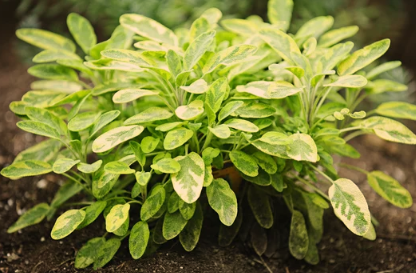
As sage plants mature, they enter the flowering stage, usually in their second year of growth.
Sage flowers are small and tubular, ranging in color from purple and blue to white and pink, depending on the cultivar.
Bees and other pollinators are attracted to sage flowers, contributing to the plant’s ecological value.
The flowering period for sage can vary, but it typically occurs during late spring or early summer. Once the flowers fade, they give way to small nutlets containing the seeds.
Allowing some of the flowers to go to seed can ensure a continuous supply of sage plants for future cultivation.
Harvesting and Regrowth
Sage leaves are the prized part of the plant, used for their culinary and medicinal properties. Harvesting can be done throughout the growing season, but it is best to wait until the plants are well-established and have reached a height of 6 to 8 inches (15 to 20 cm).
When harvesting sage, it’s recommended to snip the leaves from the stems rather than removing entire branches. This allows the plant to continue growing and producing more leaves. Sage has excellent regrowth capabilities, and with proper care and pruning, it can provide abundant harvests for many years.
Conclusion
Sage, with its impressive growth rate, versatility, and captivating aroma, is a true gem in the world of herbs.
Understanding the environmental factors that influence sage’s growth can help gardeners cultivate thriving plants.
From germination to flowering, sage offers a rewarding journey for herb enthusiasts, and its bountiful harvests can bring joy to culinary creations and herbal remedies alike.
So, embrace the wonders of sage cultivation and experience firsthand the magic of nature’s versatile herb.

